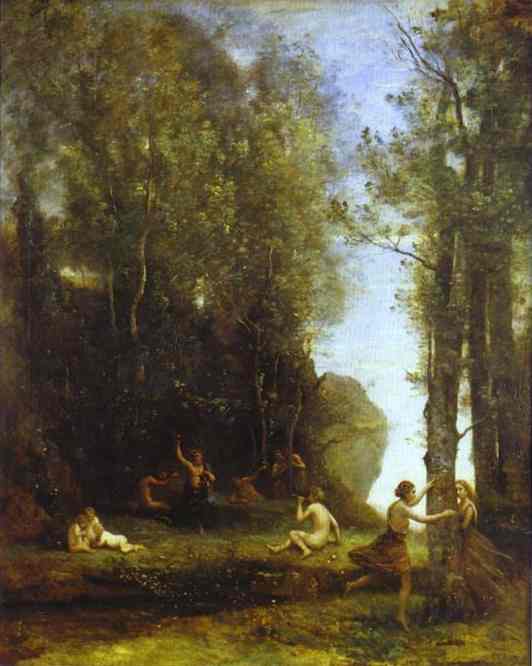compared to him, nothing." Claude Monet, 1897
"He is still the strongest, he anticipated everything..."
Edgar Degas, 1883
Jean-Baptiste-Camille Corot (July 17, 1796 - February 22, 1875) was a French landscape painter and printmaker in etching. Corot was the leading painter of the Barbizon school of France in the mid-nineteenth century. He is a pivotal figure in landscape painting and his vast output simultaneously references the Neo-Classical tradition and anticipates the plein-air innovations of Impressionism.
Corot moved between Neo-classicism, Realism, and Romanticism as well as toward an affinity with the Barbizon school, though he had a firm foundation by studying Nicolas Poussin and Claude Lorraine.
Throughout his life Corot found congenial the advice given to him by his teacher Achille-Etna Michallon `to reproduce as scrupulously as possible what I saw in front of me'.
On the other hand he never felt entirely at home with the ideals of the Barbizon School, the members of which saw Romantic idealization of the countrysite as a form of escapism from urban banality, and he remained more faithful to the French Classical tradition than to the English or Dutch schools.
Yet although he continued to make studied compositions after his sketches done direct from nature, he brought a new and personal poetry in the Classical tradition of composed landscape and an unaffected naturalness which had hitherto been foreign to it.
Through he represented nature realistically, he did not idealize the peasant or the labors of agriculture in the manner of Millet and Courbet, and was uninvolved in ideological controversy.
From 1827 Corot exhibited regularly at the Salon, but his greatest success there came with a rather different type of picture -- more traditionally Romantic in its evocation of an Arcadian past, and painted in a misty soft-edged style that contrasts sharply with the luminous clarity of his more topographical work.
More than just a painter, Corot also did many drawings, glass prints, and watercolors. His ability to capture expressive light effects within his paintings has been suggested as having paved the way for the Impressionist movement, especially since the Impressionists revered him and thought of Corot as their teacher.
'The splendors of light and sun made, on this prodigiously gifted Corot, a profound impression that becomes plainly apparent if we compare the paintings he brought back [from Italy] with works done earlier.
He was charmed, conquered and entirely abandoned himself to this sensation.
In this delight with color and light, he lost his memory of the traditions which paralyzed him, he looked at nature and life without reminiscences, without preconceived ideas. When he returned to France, he knew how to look personally at nature, and feel the varied beauties and colors.' -- La Nouvelle Revue
Corot's contemplative vision of a timeless, unchanging Arcadia was ever present in his paintings. In the social circle Corot was one of the frankest and most genial of men.
His favourite relaxation after a long day's work was the theatre, where to the last he is said to have followed the performance with the fresh delight of a child.
Naturally of a generous disposition, he gave away with a large hand the wealth which flowed in on him in his later years; and many a touching tale is told of distress relieved and sad hearts comforted by his ministrations.
The affectionate regard generally felt towards him is shown in the designation "le Pere Corot" by which he was commonly known. In 1874 he lost a beloved sister; and after this sharp blow he never recovered his former gaiety of heart. One of his last acts was the gift of a pension to the widow of his brother artist Millet, who had died not long before.
 |
*rehsgalleries*
*artchive.com*
*ibiblio.org*
~~~~~~~~~~~~~~~~~~~~~~~~~~~~~~~~~~~~~~~~~~~~~~~~~~~~~~~~~~~~~~~~~~~~~~~~~~~~~~






















































































































































































No comments:
Post a Comment